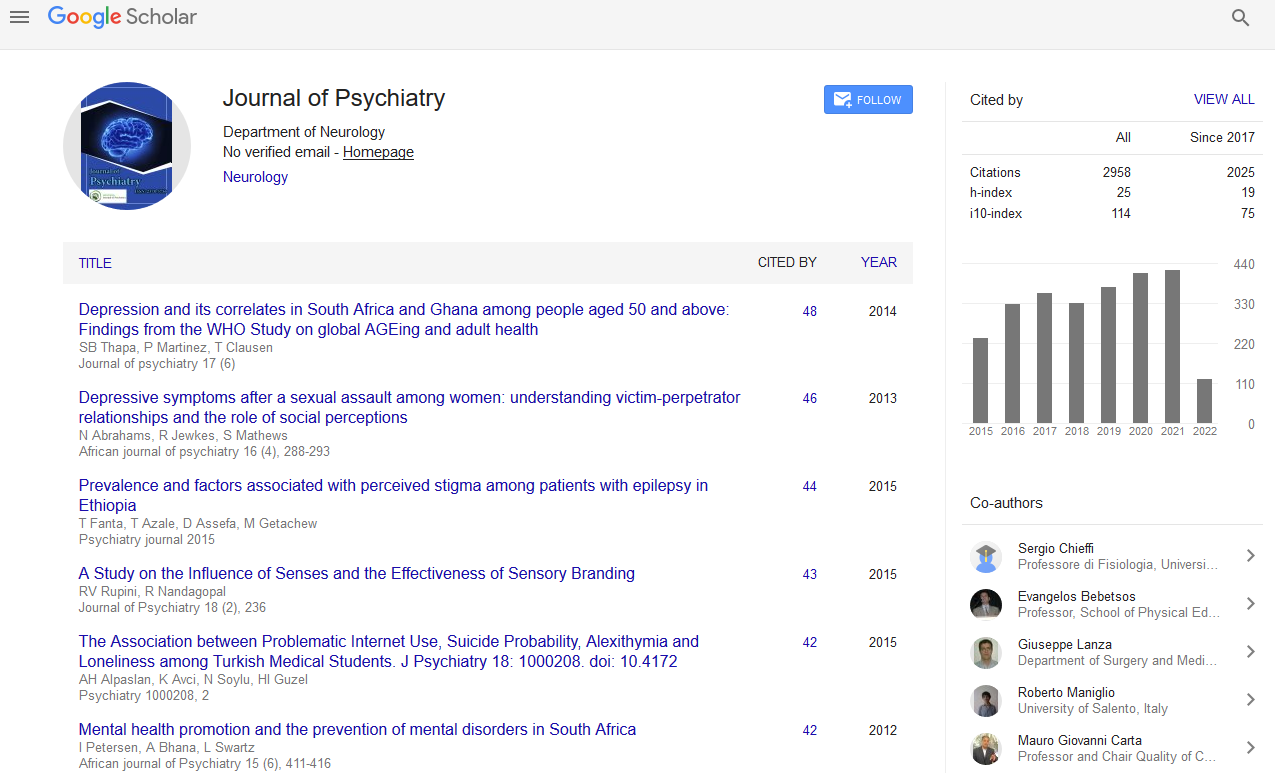PMC/PubMed Indexed Articles
Indexed In
- RefSeek
- Hamdard University
- EBSCO A-Z
- OCLC- WorldCat
- SWB online catalog
- Publons
- International committee of medical journals editors (ICMJE)
- Geneva Foundation for Medical Education and Research
Useful Links
Share This Page
Open Access Journals
- Agri and Aquaculture
- Biochemistry
- Bioinformatics & Systems Biology
- Business & Management
- Chemistry
- Clinical Sciences
- Engineering
- Food & Nutrition
- General Science
- Genetics & Molecular Biology
- Immunology & Microbiology
- Medical Sciences
- Neuroscience & Psychology
- Nursing & Health Care
- Pharmaceutical Sciences
Abstract
Schizophrenia with Somatic Delusions: A Case Report
Panagiota Korenis, Rahulkumar Patel, Luisa Gonzalez and Andrew Joelson
Abstract
Schizophrenia is a mental illness that affects approximately 1% of the general population. Symptoms most commonly include auditory hallucinations, several types of delusions, disorganization in speech and behavior, formal thought disorder, and negative symptoms including poverty of speech, thought or motivation. Of the delusional symptoms, somatic delusions-those that pertain to the body-are rather rare. Somatic delusions are defined as fixed false beliefs that one's bodily function or appearance is grossly abnormal. They are a poorly understood psychiatric symptom and pose a significant clinical challenge to clinicians. Studies indicate that only one third of this patient population has a positive treatment outcome with resolution of symptoms. While challenges exist in treating patients when they present with somatic delusions alone, it becomes far more difficult when somatic delusions present in patients with schizophrenia. Physical symptoms such as pain or discomfort are often incorrectly perceived or misinterpreted by psychotic patients. Often medical conditions are overshadowed by psychosis and may get undiagnosed or overlooked which could potentially result in fatal errors for patients. While little has been written about patients with true delusions that are somatic in nature, somatic delusions, specifically somatic delusions associated with schizophrenia are particularly under reported in the literature. Here, we describe the case of a 40-year-old Hispanic-American patient with established chronic schizophrenia. From her initial presentation to the hospital, she exhibited and perseverated on a number of somatic delusions about her body including her bones being "twisted" around one another, delusions of pregnancy and abortion, and her normally-functioning arm being broken. This paper will also explore treatment challenges posed by these complicated patients. In addition, a review of potential cultural influences as well as the economic burden that such patients place on the health care sector by their numerous emergency room and office visits will be discussed.


